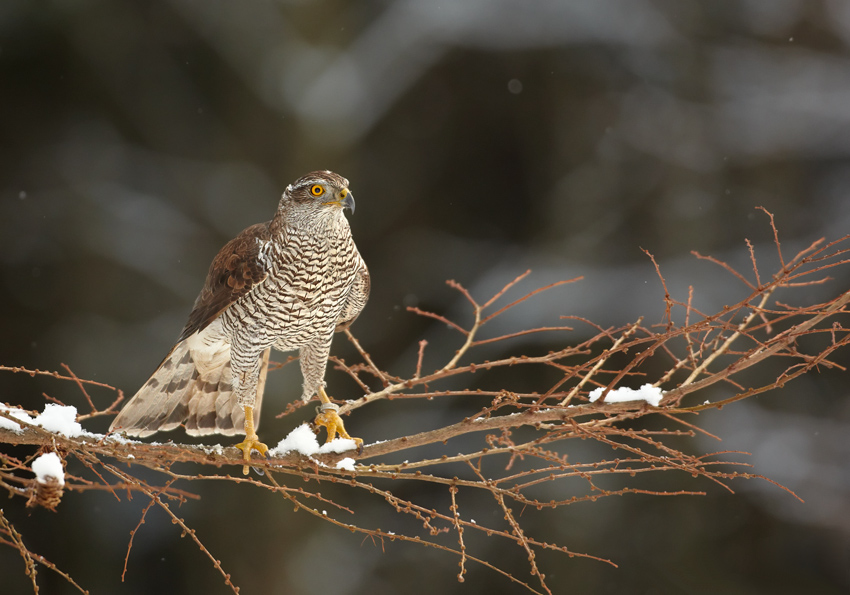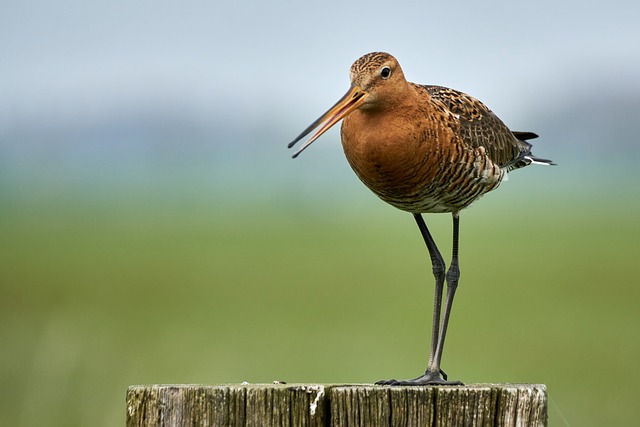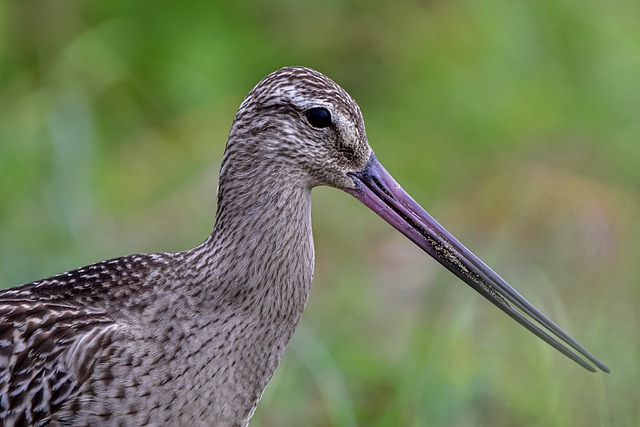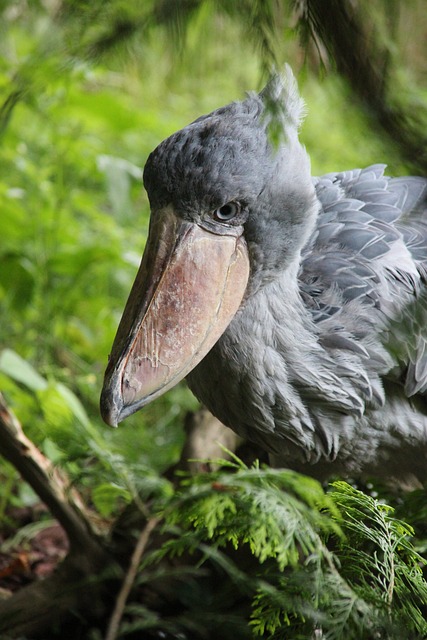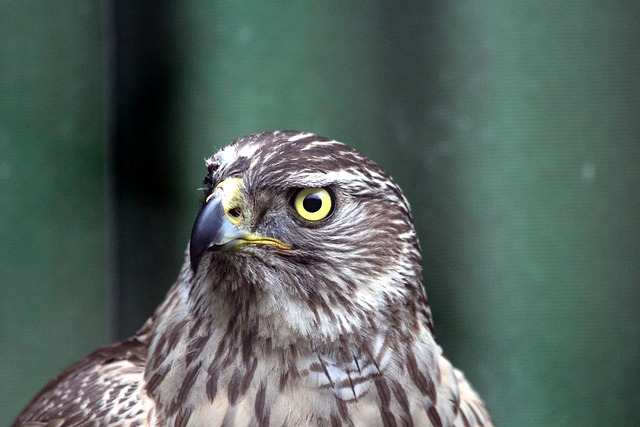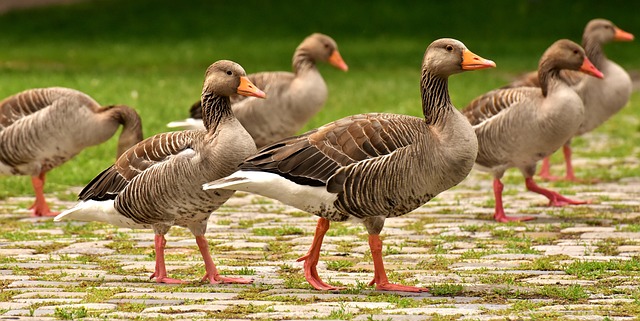The Eurasian Oystercatcher (Haematopus ostralegus) is a wading bird that is native to Europe and Asia. It is one of the most widely distributed waders in the world and can be seen in nearly every continent.
It is a beautiful bird, with striking black and white plumage and bright red bill and legs. It is an important species for conservation, and its population is monitored closely by many organizations.
Introduction
The Eurasian Oystercatcher is an iconic species that has been featured in many books, films, and television shows. It is an amazing bird, and it is important to learn about its habitat, diet, behavior, breeding, migration, and conservation.
In this article, we will look at all the important aspects of the Eurasian Oystercatcher. From its habitat and diet to its behavior and breeding habits, we will explore all the aspects that make the Eurasian Oystercatcher an important species for conservation. We will also discuss the threats the Eurasian Oystercatcher is facing and what can be done to help protect this species.
The Eurasian Oystercatcher is an important species for conservation for many reasons. It is a very adaptable bird that can live in many different habitats, from open fields to wetlands. This species also plays an important role in keeping the local environment healthy, as it helps to keep the water clean and regulate the populations of other species.
The Eurasian Oystercatcher also serves as an important indicator of environmental health, as its presence or absence can tell scientists a lot about the health of an area.
Learning about the Eurasian Oystercatcher is important for environmental education and conservation. It also gives us an opportunity to appreciate and understand the unique and varied habits of this species. By understanding more about the Eurasian Oystercatcher, we can help to protect it and ensure that its population remains healthy.
So let us explore the Eurasian Oystercatcher and learn all there is to know about this incredible bird.
Habitat
The Eurasian Oystercatcher is a widespread species that can be found across a variety of habitats across Europe, Asia, Africa, and the Middle East. They are most commonly found on coasts, estuaries, mudflats, salt marshes, and freshwater wetlands. In these habitats, the Eurasian Oystercatcher is able to forage for its preferred food sources, such as small crabs, molluscs, worms, and fish.
The Eurasian Oystercatcher is also a keen beach-goer, as they can be found along the sandy shores around the world. On coastal areas, they typically nest on small, flat areas of land close to the water’s edge. In estuaries, they typically nest on mudflats with a suitable supply of food.
The Eurasian Oystercatcher is an adaptive species, able to quickly change its behaviour in order to live in a range of different habitats. This species has the ability to switch between living in a mainly coastal environment or a more inland environment. For instance, in the Baltic Sea some populations are known to migrate inland to breed. Despite this flexibility, the Eurasian Oystercatcher is still strongly associated with wetland habitats.
The Eurasian Oystercatcher prefers to live in large flocks with other birds, and they are often found in mixed flocks with other waders such as curlews, turnstones, and knots. This tendency to flock in large groups makes them highly visible in their native range.
The Eurasian Oystercatcher is a protected species in some of its native range, with some countries providing special protection for their breeding grounds. In Europe, they are protected by the Birds Directive, a European Union law that protects birds within the EU. The European Oystercatcher population is monitored annually.
The Eurasian Oystercatcher is a well-known species thanks to its distinct appearance and loud, musical call that can be heard in many of its native habitats. Despite this, it is still facing threats from habitat loss, poaching, and climate change. Conservation efforts are underway, and the species is now included in some national and international protection schemes. Well managed habitats such as estuaries and mudflats can provide sanctuary for this iconic species.
Diet
The Eurasian Oystercatcher is an incredible omnivore, with a diet consisting of a wide variety of food sources. Its main food sources are molluscs, crabs, small fish, and other small aquatic invertebrates. The Eurasian Oystercatcher is an especially efficient hunter, and it can use its beak to pry open the shells of molluscs to extract the flesh. The bird is also known to feed on small mammals such as mice, lizards, and amphibians.
The Eurasian Oystercatcher is also able to take advantage of natural food sources. It usually forages along rocky beaches and shorelines, searching for items that have been washed up by the waves. This includes pieces of seaweed, dead fish, and sometimes even small pieces of plastic. The Eurasian Oystercatcher is also known to forage on land, where it can search for worms, insects, and other small invertebrates.
The Eurasian Oystercatcher is a skillful hunter, but it is limited by the size of its beak. It can only access food sources that are small enough to fit into its beak, which means that it is unable to feed on larger prey. The bird also has a limited ability to dive underwater, which restricts its access to some food sources.
The Eurasian Oystercatcher is an opportunistic feeder, and it will take advantage of any food source that is available to it. This includes taking scraps from humans, such as discarded food or bait. The Eurasian Oystercatcher is an especially adept scavenger, and it can be found among flocks of other birds, such as gulls, that are searching for food.
The Eurasian Oystercatcher is highly adaptable, and it can alter its diet depending on the environment and season. In the winter, the bird may switch to a diet of grain, seeds, and fruits. It is also known to eat carrion, such as the remains of dead fish.
The Eurasian Oystercatcher is an incredible hunter and forager, and it is able to take advantage of a wide range of food sources. From molluscs to small mammals, the Eurasian Oystercatcher has the ability to access food that is available in its habitat. The bird is also an opportunistic feeder, and it is able to take advantage of any food source that is available.
Behaviour
The Eurasian Oystercatcher is a very active bird that loves to move around its habitat. During the day, the bird is seen foraging for food, perching on rocks and vegetation, and flying. This species is not very territorial and will not aggressively defend its area against other birds.
The Eurasian Oystercatcher is a vocal bird. During the breeding season, the male can be heard producing a loud, rattling call as a mating display. It is also known to have a wide variety of other calls that it uses to communicate with other birds.
When it comes to social dynamics, the Eurasian Oystercatcher is often seen in large flocks. This species is not particularly territorial and will often allow other birds to join its flock. During the non-breeding season, the Eurasian Oystercatcher will sometimes congregate with other shorebird species to form mixed flocks.
The Eurasian Oystercatcher is also a very active bird when it comes to foraging. This species will often be seen probing the shallow waters and mudflats for food. It is known to eat a variety of items, including mollusks, crustaceans, worms, and fish. When the bird finds food, it will use its long, decurved bill to pry the food out of the mud or sand.
The Eurasian Oystercatcher is also a great traveler. This species migrates long distances, usually between its breeding and wintering grounds. This bird often follows the coastline during its migrations and is capable of navigating long distances using environmental cues.
Overall, the Eurasian Oystercatcher is an active and vocal bird that loves to move around its habitat. It is a social bird that often forms large flocks. Additionally, this species is a great forager and traveler that navigates long distances during its migrations.
Breeding
The Eurasian Oystercatcher breeds annually and usually begins nesting in late April or early May. The typical nest is a shallow depression that is lined with plant material, feathers, and other debris. The Eurasian Oystercatcher usually selects grassy sites with some sparse vegetation for its nest, often in close proximity to saltwater.
The Eurasian Oystercatcher typically lays 3-4 eggs and incubates them in shifts with its mate. The incubation period takes approximately 28-30 days. During this time, the adults will defend the nest aggressively from any potential predators. Once the eggs hatch, the chicks will feed on their own, but the parents will still provide them with protection.
The Eurasian Oystercatcher's chicks fledge after approximately 30-35 days, but usually remain with their parents until the next breeding season. This provides the young birds with valuable experience that will help them survive when they eventually disperse on their own. During this time, the parents will teach the young to hunt, feed, and migrate.
The Eurasian Oystercatcher is considered a monogamous species, staying with the same mate for multiple breeding seasons. This allows them to form strong pair bonds that can help them successfully raise their offspring. The Eurasian Oystercatcher also has a unique mate recognition system, where both birds use the same species-specific call when they reunite after a period of separation.
The Eurasian Oystercatcher is a socially active species, often forming flocks that are composed of unrelated birds. These flocks are common during the non-breeding season and can help the birds find food in a more efficient manner. During the breeding season, the Eurasian Oystercatcher will often form territories that protect their nests from other birds.
The Eurasian Oystercatcher has a relatively high breeding success rate. With the right conservation efforts in place, the species can continue to flourish in its natural habitats.
Migration
The Eurasian oystercatcher is a migratory bird, travelling long distances to winter in warmer climates. It is believed that the Eurasian oystercatcher has a high navigational ability and is capable of travelling up to 2,000km for its migratory journey.
The Eurasian oystercatcher typically begins its migration at the end of summer, flying south for cooler climates. During this journey, the birds will cover vast distances, often up to 2,000km, and sometimes even further.
Environmental triggers such as temperature and day length are believed to be the impetus for the Eurasian oystercatcher to start its migratory journey. The birds will often travel in large groups, moving in a V-shaped formation and taking advantage of the lift generated by the large group.
The Eurasian oystercatcher has an impressive navigational ability, often returning to the same nesting sites year after year. This behaviour is believed to be due to the birds’ ability to remember landmarks, such as coastlines and large rivers, which they use as navigational markers on their journey.
The Eurasian oystercatcher is also believed to be able to detect the earth’s magnetic field which helps them to orient themselves when navigating at night. The birds also use the stars to help them find their way, as well as a variety of other cues, such as weather patterns and smell, to help them determine their exact location.
The Eurasian oystercatcher is a resilient bird, with a remarkable ability to travel long distances and complete its migratory journey safely. This impressive bird serves as an example of the incredible abilities of nature, and how it is able to adapt to changing environments and conditions.

